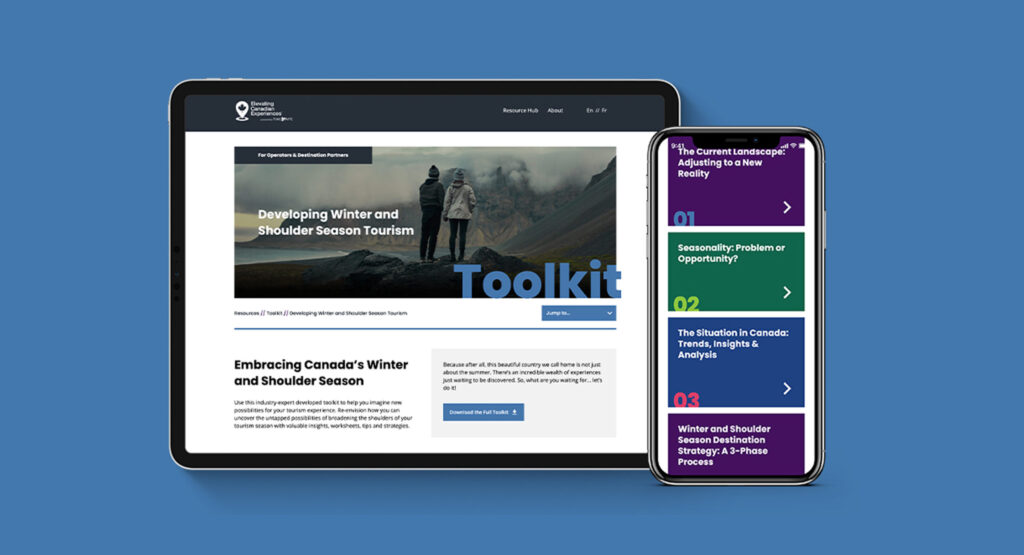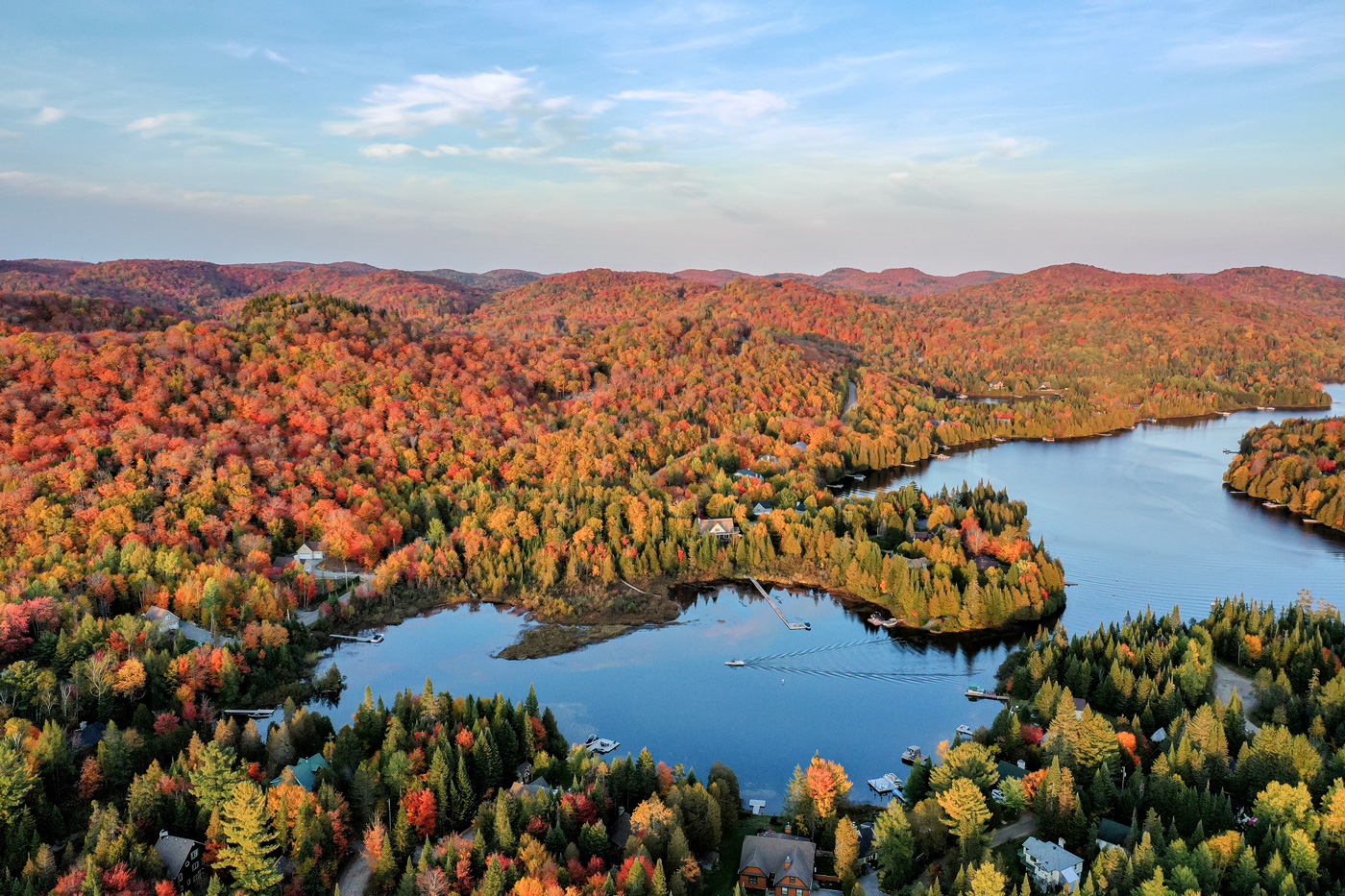The Heads and Tails of Shoulder Season Tourism in Destination Marketing
Why should destination marketers prioritize shoulder season tourism? What are the opportunities and challenges? Who’s interested in shoulder season travel?
Before answering these burning questions, let’s start with the basics of seasonality in tourism. If peak season is when tourism is at its highest and lowest in the off season, the shoulder season is the period in between.
But when is it, exactly?
According to the Tourism Industry Association of Canada (TIAC), our country has two shoulder seasons: from September to November and from April to May. That’s not to say it’s the same from one destination to the next. For example, in Whistler, British Columbia, the shoulder season begins in April but stretches well into June, while Iqaluit, Nunavut, experiences its shoulder season from May to June.
How to identify your destination’s seasonality
Seasonality is directly related to revenue and hotel occupancy, per TIAC’s Developing Winter and Shoulder Season Tourism Toolkit.
To determine your destination’s seasonality, inspect the numbers and look for trends each month and season. When revenue and occupancy are highest, that’s your peak season; when they’re lowest, that’s your off season; and when they’re moderate, that’s your shoulder season.
That’s the basics of seasonality in tourism. Dig a little deeper and we see three defining characteristics:
Consistency: High, low, and shoulder seasons occur at the same time each year—the timing is predictable and reliable.
Commonality: Seasonality isn’t specific to tourism—its impact is widespread, from agriculture to culinary, real estate to investing.
Cause: Seasonality is determined by internal and external factors—weather patterns, influx of temporary residents in your destination, and seasonal activities.
TIAC’s Elevating Canadian Experiences program helped elevate culinary-related and winter and shoulder season tourism in 2020. Here’s how we helped that knowledge live on.

Why focus on shoulder season tourism?
Unlike the off season, the shoulder season is ripe with opportunity for destinations, operators, and travellers alike.
For destinations and operators, demand is lower than the peak season. As a result, travel and accommodation fare decrease, and this can incentivize visitations. Lower demand also increases flexibility in offers, from pricing to business hours to more intimate experiences.
For travellers, a destination is less crowded in its shoulder season. In the wake of the 2020 pandemic, research shows tourists are seeking out less busy places to visit. Doing so allows them to experience the place in a more authentic way.
Travellers not only save more during the shoulder season, they experience destinations in a more intimate and bespoke way.
Yes, the shoulder season does have its limitations. Some activities aren’t available and some attractions close. Like boat cruises shutting down in the winter, or heritage sites closing for maintenance in the fall. This can mean less to see and do for visitors.
Another obstacle is staffing. If your destination’s operators rely on post-secondary students to fill positions, many of those employees return to their hometowns following the school year. So some businesses are forced to reduce hours or close for the season entirely. This has a direct impact on visitor experience.

Five ways to grow shoulder season tourism
Let’s explore how to maximize the shoulder season in your destination.
1. Target new audience segments
The type of travellers visiting during the peak season don’t have to be the same as those you market to in the shoulder season.
In fact, peak-season guests may not be interested in shoulder season experiences at all. Meaning, winter enthusiasts may not be sun-seeking beach goers. Just like foodies may not be adventure-seeking adrenaline junkies.
If activities and attractions differ from season to season, the audiences you target should follow suit. This is niching 101. For instance, if your destination’s shoulder season is September to October, and fall foliage is a unique offering, consider narrowing your audience to photographers and hiking enthusiasts.
2. Adapt messaging to reflect seasonality
Similar to targeting different audience segments, how you communicate the value of the shoulder season should differ from your peak season.
This might mean a shift from overarching brand messaging to niche offerings and how they benefit a specific audience. Or focusing on how your destination is less crowded and how that positively impacts the visitor experience.
It could also mean highlighting lower prices of accommodations and travel, communicating how guests’ budgets go further during the shoulder season. Specifically, it’s cheaper to visit during the shoulder season, so visitors can see more, do more, and taste more during their stay—just be careful you don’t devalue your core offerings in the process.
3. Narrow down geographical targeting
This one may seem counterproductive, as it limits the reach of your marketing and advertising efforts. But with the pandemic’s after effects lingering and concerns over climate change growing, more and more travellers are considering destinations closer to home.
People are more aware of the impact tourism has on a destination, both economically and environmentally. As a result, they are keen to support local and regional businesses, while seeking out places they can get to easily without producing a large carbon footprint. This means visiting destinations they can drive to or are accessible by train.
As it relates to media, consider digital and social media advertising with strict geographical parameters. Or niche publications in nearby cities—like our client, Tourism Kingston, and its focus on culinary magazines specific to Ottawa and Toronto.
Want to learn more about our work with Tourism Kingston, including media and brand strategies? Check out the case study.
4. Develop new products and experiences
Sometimes, the best way to improve shoulder season tourism is to create new offerings specific to the time of year.
For example, if the fall is your main shoulder season and you’ve identified birders as a viable target audience, why not develop a series of guided hikes through migratory areas? Or if you want to attract history buffs, try working with a local heritage group to push fall maintenance into the winter to create a win-win-win scenario.
Ultimately, developing new products and experiences is a big investment. And it can be risky when the effectiveness is largely unknown. Be sure to connect with your local destination marketing organization (DMO), operators, and even city officials for support and resources.
5. Create new partnerships
Funding is an ongoing concern for tourism brands, destination marketers, and operators. Even more so when trying to enhance a season with lower profits.
This is why partnerships are so important. They bring stakeholders together and pool resources. They lower the barrier to entry for new operators and lessen the load for all involved. What’s more, they open the door to new products and packaged offerings.
Start with your DMO, as it exists to connect stakeholders with each other. More so, it’s a resource hub. Where funding opportunities, research and insights, workshops and events, and marketing support are all housed under one roof.
How impactful can funding opportunities be? Learn how Alphabet® and Ottawa Tourism teamed up to help local businesses thrive post-pandemic.
Next, reach out to city representatives—support is always a possibility, as long as you’re willing to lobby for it. Remember, a boost in tourism, from peak season to shoulder season, benefits them as much as it does the place.
Finally, don’t underestimate the power of a ‘boots on the ground’ approach. Speak directly with the businesses and entrepreneurs in your destination. Organize monthly meetups to brainstorm new ideas, share success stories, and even discuss failures.
At the end of the day, more visitors means more heads in beds, diners in restaurants, and more travellers on the trails.

More opportunities to consider
How else can you improve shoulder season tourism?
Start with email marketing. Take advantage of the peak season to build a list of travellers who have visited your destination and experienced its core offerings. Then test your ideas before investing in new products and packages.
Send surveys by email and ask for feedback from past guests—what they enjoyed most during their visit, what they didn’t enjoy, and what they would like to see more of. To generate more responses, consider an incentive and tie it to the shoulder season.
Another option might be a loyalty program. Not only can this increase tourism throughout the year, but it also has the potential to stimulate repeat visits and word-of-mouth marketing.
Entice past guests to visit during the shoulder season by rewarding them for visiting during the peak season. Consider how to involve operators and partners:
- If hotels are struggling to put heads in beds, preferred-member pricing is an option.
- If restaurants are struggling to fill tables, give a gift card to returning guests.
- If museums are quiet, a private tour could be a powerful motivator.
Lastly, pay attention to the calendar. Identify annual events during the shoulder season, both holidays and those hosted by operators. Make note of when school breaks take place. And pinpoint seasonal activities relevant to the audiences you’re targeting. Then launch marketing campaigns specific to these events, breaks, and activities, positioning your destination as the backdrop.
A helping hand to boost shoulder season tourism
A sustainable destination is built on more than its peak season. With growing concerns for over tourism, the shoulder season is a way to alleviate the pressure. And as remote work and blended travel (business combined with leisure) become more popular, people are seeking alternative times to travel.
With more than 20 years’ experience in place branding, marketing, and strategy, we’re here to lend a helping hand. Connect with the Alphabet® team when you’re ready to take on the shoulder season and maximize the potential of your destination.